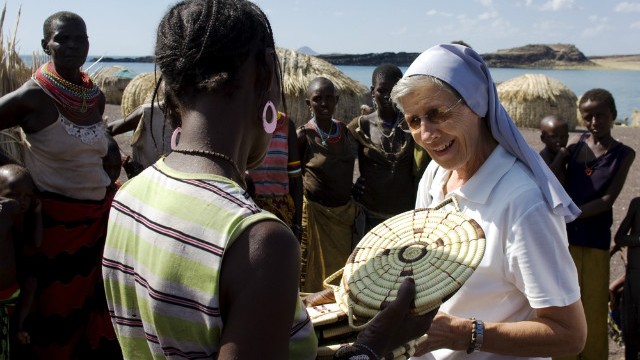The Shona people, the largest ethnic group in Zimbabwe, are a unique group that encompass a variety of different cultures and traditions. Although Mozambique, South Africa, and Botswana all claim Shona populations, the majority of Shona live in Zimbabwe and make up 80% of the country’s 9-million-plus population.
All told, the Shona are an estimated 14 million strong, and their cultural influence across southern Africa is extremely important. Here are 15 things you didn’t know about the Shona people.
Sources: EveryCulture.com, ZimEye.org, AfricanImportart.com, Britannica.com, Bulawayo1872.com, AfricanCraftsMarket.com, PBS.org, African Holocaust Society, University of Witwatersrand Press
This article originally appeared on AFKInsider.com.
The term “Shona” often excludes the Western Shona
The Western Shona, known as Bakalanga, are found in Southwestern Zimbabwe and Botswana, but are often not counted in the general Shona classification. As it is, the Shona people today are fairly fragmented, with most identifying with a particular clan rather than the whole. The Shona consist of two distinct families today – the original Bantu occupants of the region and the conquerors, each of which is split up into numerous tribes.
Shona dialects help identify which village and ethnic group a person belongs to
Dialect groups are extremely important in Shona, and although many are very similar, they can help identify exactly where a person is from, as well as which ethnic group they belong to. For instance, if a person speaks the Zezuru dialect, they would likely observe customs and beliefs unique to the Zezuru ethnic group.
Many Shona people keep cattle for prestige and currency
Many Shona people are farmers, with their key crops including corn (maize), millet, sorghum, rice, beans, peanuts, and sweet potatoes. Cattle were traditionally used as a source of payment, often for bride prices, and for milk.
People of the same clan use a common set of totems
Totems, usually made of animal and body parts, delineate people with a common ancestor. The ancestor would have been the founder of the totem. Those within the same totem are not allowed to marry or have intimate relationships with each another. Totems can also cross regional groupings.
Totems constitute an important cultural distinction within Shona groups
When a member of a totem dies, somebody from the same totem must initiate burial proceedings, along with other traditional ceremonies. Just to demonstrate the importance of the totem in Shona culture, Shona chiefs must be able to recite the history of their totem all the way from its initial founder before they can be sworn in as chiefs.
Shona traditional culture is known for excellent stone sculpture
The Shona people have a rich artistic heritage, and are known particularly for carving stone sculptures. Though Shona sculptures were a common skill of the early Shona people, the work has seen a resurgence in popularity since the 1950s. Modern Shona sculptures continue to express enormous emotional power that speak to all humanity.
There is a common belief among many Shona in a creator known as Mwari
The preeminent Shona deity is Mwari, and many ancient shrines exist across Zimbabwe to honor Mwari. The Shona also place high importance on ancestral and other spirits, honoring and praying to them in a variety of ways for good health, rain, success in enterprise, and other critical facets of life.
Magic and witchcraft remain an important facet of Shona culture
The Shona believe in two types of spirits — “shave” or wandering spirits, and “vadzimu”, or ancestor spirits. While both can be malevolent or benevolent, the bad spirits are associated with witchcraft. To this day they are often used as explanations for disasters or misfortune in a community.
The Shona are well known for mbira music
A mbira is a hollow gourd with metal reeds that are plucked by the player, and the instrument has become a token of the Shona people. Sometimes referred to as a finger piano, the mbira is associated with the ancestors. Many modern musicians choose to incorporate the mbira and its traditional sound in their songs to help establish a feeling of solidarity among families and communities.
Zimbabwe was named after the capital of the Rozwi Shona dynasty
The Rozwi Shona dynasty, which lasted from the 12th to 15th centuries, is responsible for the name of modern Zimbabwe. The Great Zimbabwe — the stone-built capital of the dynasty — derives its name from “dzimba dza mabwe,” or “great stone houses,” which later evolved into the word “Zimbabwe.”
Sadza (maize) is the biggest part of their diet
Sadza (pronounced sudza) is the primary part of their diet and is usually cooked down to the consistency of mashed potatoes. Being rather plain, it’s often served with other vegetables or meat to give it more flavor.
Shona designs often have intricate geometric patterns
The technique used to create the designs of everyday Shona life use the sadza instead of wax for painting. Once the designs are dried in the sun, the sadza is washed away leaving the intricate geometric patterns.
The original Shona people were originally part of the Hungwe people
Originally, all of the Shona people were under the Hungwe, but after the fall of the Hungwe, were under Mbire. The Hungwe settled in Zimbabwe two to three hundred years before the Mbire arrived.
Christian missions have weakened leadership
Although some benefits have come from them, Christian missions along with elementary education have weakened the traditional institutions and leadership of the Shona.
There are five main Shona language groups
There are five main groups to the Shona language, Korekore, Zeseru, Manykia, Ndau, and Karanga. The Ndebele absorbed the last of the groups when they moved into western Zimbabwe in the 1830s.
Want to discover the finer side of Africa? Sign up for our weekly newsletter.

